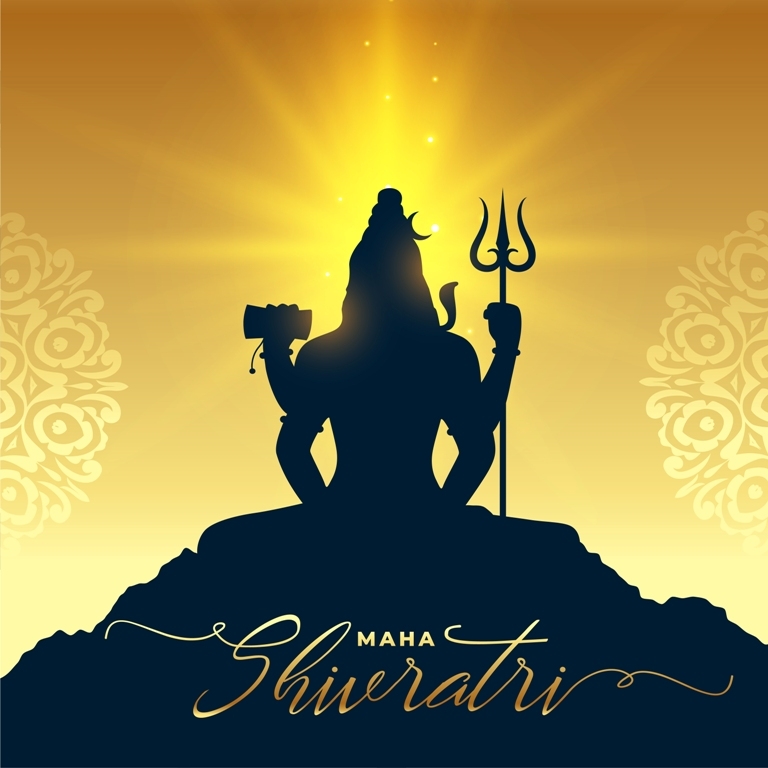
By: Vinod Chandrashekhar Dixit
We have heard popular stories of Maha Shivaratri andhave found it in many of the texts like Shiva Purana and associated Puranas. Shiva temples on 18th February will be reverberated with the chants of “Om Namah Shivaya” and vedic hymns on the occasion of Maha Shivaratri.
Maha Shivratri is celebrated to commemorate the wedding of Lord Shiva and Parvati, who are the most beautiful couple. Hindus all over India and abroad are celebrating Maha Shivaratri today. Maha Shivaratri, literally translating to the ‘Great night of Shiva’ is celebrated with great fervor by the Hindu community. It is said that Lord Shiva is pleased with those who keep awake and pray to him with full devotion without asking anything in return. Maha Shivaratri is dedicated to Lord Shiva and his wife Goddess Parvati. It is said that on this day, Lord Shiva saved the world from a pot of poison that emerged from the ocean during Samudra Manthan.
The great festival of Maha Shivaratri is celebrated every year on the fourteenth fortnight of the waning moon during the month of Phalguna. This is because this day is very dear to Lord Shiva, he manifested as Shiva Linga on this day for the first time. Lord Shiva had married to Goddess Parvati on this auspicious day. There are few more reasons for this day being celebrated as Shivaratri.
Maha Shivaratri is not only one of the magnificent festivals in India but also in Nepal and other regions where Lord Shiva is worshipped. Among the various popular shrines, Amarnath temple pilgrimage or Mount Amarnath (about 140 km from Srinagar, Jammu and Kashmir) is believed to be the holiest in Hinduism. The festival is celebrated to receive the grace of Lord Shiva. Shiva has the divinity of all the gods, he is the giver of all the wisdom, and he is the father of the entire universe.
On Shivaratri various offerings are made to the Shivalingam. As part of Maha Shivaratri’s Abhishekam, the Shiva linga, a signifier of Shiva’s abundant power is given a ritualistic bath. According to Shiva Purana on the eve of Maha Shivaratri, the devotees bathe the linga with milk, honey, ghee, curd, and sandalwood paste while chanting ‘Om Namaha Shivay’. Traditionally, bael leaves, which have to be a stalk with three leaves, are kept on top of the linga. Ber or jujube fruit is also given as a special offering to the God on this day.
It is said that on the day of Maha Shivaratri, one gets the fruits of worshiping the whole Shiva family along with the worship of Lord Shiva. One gets rid of the bad karma and enriches his life with joy and prosperity. The devotees definitely achieve their desired goals. One receives the blessings as progeny, health, longevity, fortunes, wisdom, and freedom from hindrances. Though there are numerous texts related to lord Shiva, there are endless names of Shiva too. But as per the major scriptures, to receive the grace of Lord Shiva, the most appropriate mantra is the panchakshari mantra “Om Namah Shivaya”. This mantra is considered very pure and potent of all. This maha-mantra has to be chanted as much as possible during the Maha Shivaratrivrata (fast). It blesses the devotees with the desired results.
On Maha Shivaratri , many devotees observe fast and chant ‘Shivjiki Jai’ in Hindi and ‘Om Namah Shivaya’ in Sanskrit. They later celebrate Maha Shivaratri by drinking thandai, which is made up of bhang (cannabis), almonds and milk. It is said that Lord Shiva liked this drink and devotees take it in the form of prasad along with sweets. The appearance of Lord Shiva is very wonderful and special. He is eternal, indestructible, self-manifest, unborn and is completely free from aging, death, birth. He is the ultimate shelter of all the beings. He provides the quiescence to everyone and he dissolves the whole creation back to the origin by opening his third eye during the pralaya. He is the beginning and end of the world. Wearing a garland made from rudraksha and applying turmeric vermilion or holy ash on forehead symbolizes a holy ritual on this religious festival.



